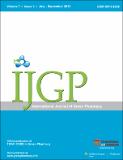| dc.description.abstract | The leaves of Cinnamomum tamala are aromatic, carminative, stimulant, diuretic, diaphoretic, lactagogue, and deobstruent. Other parts of the plant are also used as traditional remedies for various diseases. Aim: The aim of our study was to carry out the evaluation of the preliminary phytochemical and some pharmacological properties including cytotoxicity, antibacterial and antifungal sensitivity, total phenolic content, clot lysis and diuretic potential of the leaves of C. tamala. Materials and Methods: Phytochemical screening of ethanol extract was carried out by standard chromogenic reagents and total phenolic content was estimated in term of gallic acid equivalent by using Folin Ciocalteu’s reagent. Brine shrimp lethality assay method was used to determine the degree of cytotoxicity. Antibacterial and antifungal sensitivity test was performed using disc diffusion method in agar medium and minimum inhibitory concentration was determined by micro dilution method. Clot lysis and diuretic potential were compared with streptokinase and furosemide, respectively. Statistical Analysis: The results were statistically interpreted using
Student’s “ t” test. Results: The extract contained alkaloids, steroids, tannins and reducing sugars. Total phenolic content was found to be 276 gallic acid equivalent/100 g of dried plant material. In brine shrimp lethality assay, it showed moderate toxicity (LC50 = 40 μg/ml
and LC90 = 160 μg/ml). The extract inhibited growth of tests bacteria and fungi with significant zones of inhibition. Highest activity was observed against the bacteria Salmonella typhi and the fungus Aspergillus niger. In‑vitro clot lysis action of extract was comparable with streptokinase (48.22 ± 2.98%) and maximum effect (24.75 ± 1.27%) was found at a dose of 10 mg/ml. The extract showed diuretic activity which responded 29.16% and 37.50% diuretic activity in comparison with control (water) which indicates the plant mild
diuretic activity. Conclusion: The results depicted that traditional uses of the plant are rational, however, advanced researches are needed to identify the active components as well as mechanism of action. | en_US |

